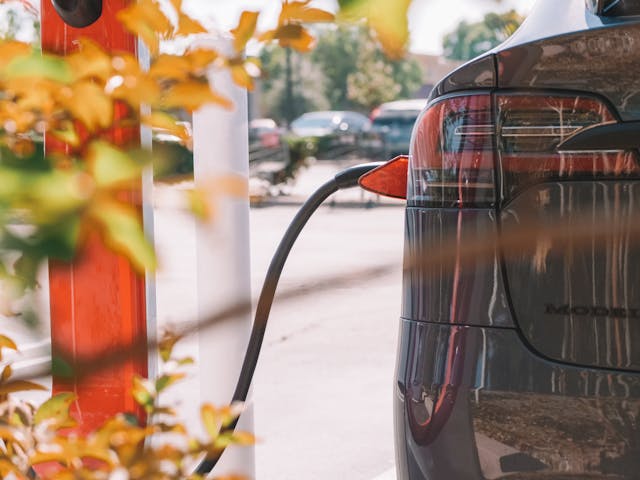

The industry of automobility in Asia possesses immense potential due to the extensive growth of consumption and rising income level. As consumers in Asia grow their spending level, they adopt new behaviors when choosing automotive products, such as considering different ownerships, increasing eco-friendly considerations, and becoming more aware of time spent commuting.
The recent trend of ride-hailing has significantly changed how Asia's automobility industry works. Automotive players can now penetrate lower-income countries in Asia by allowing consumers access to private vehicle-based modes of transportation without needing to own one. As a result, the region is now home to several ride-hailing giants such as China-based Didi, Grab, Gojek in Southeast Asia, and Ola in India.

The emerging region with lower car ownership rates, such as Southeast Asia, would likely grow its automobility sector through shared-mobility solutions. The shared-mobility concept expects to make up over 25 percent of Asia's mobility value pool. Historical numbers prove its robust capability in countries with high traffic congestion, such as India, Indonesia, and China.
The unprecedented growth of ride-hailing services has pushed car manufacturers to adapt to the new demand for car ownership. Toyota, Hyundai, and Singapore-based startup Carro have launched their latest innovation of subscription car services that allow consumers to rent cars monthly with end-to-end features such as insurance, maintenance, and online registrations. Other innovations made by automobility players were secondhand ownership, enabling people to personally trade used cars to increase accessibility in price flexibility and capitalize on the new notions of car ownerships.
The automobility industry expects rapid changes in communications and interactions in the market, as consumers demand innovative ways to ease the previously complex process of buying cars. Several leading automotive companies have started to express the intention to provide better customer experiences in the automobility landscape. For example, Shanghai-based manufacturer, NIO, has introduced its integration with WeChat to engage automotive consumers through the application, facilitating automotive enthusiasts in digital touchpoints and community centers.
Similarly, India's Mercedes-Benz has released the latest direct-to-consumer sales method through customer-centric digital offerings, allowing the car sales process to transition and become online. Additionally, Hyundai has developed a Metaverse platform to enable potential consumers to virtually test-drive its Sonata N Line.
As Asia's automobility landscape becomes increasingly competitive in innovation and customer experience, companies face the demand to reconstruct their strategies and evaluate the key factors that consumers find essential today. A customer-centric approach in developing the plan will equip companies with more agile operating tactics and ensure they remain relevant in the ever-changing climate.
If Asian automotive companies remain hesitant to change their usual ways to cater to the modern consumer demands, the region's consumers have expressed their willingness to shift to other brands instead of sticking their loyalty to one particular brand.
The new automotive sector has proven that consumers in the automotive industry now do not need an exceptionally high-income level to become the target market of car manufacturers, as the industry opens up to various kinds of ownership types. Additionally, the fluid weather of Asia's automotive sector provides rich opportunities with diversified income streams ready for the industry players to develop and enjoy.

Digital Lending in Southeast Asia: Current Trends and Future Outlook
Digital lending in Southeast Asia (SEA) has been on an upward trajectory, significantly enhancing financial access for both individuals and businesses. The region's high internet and mobile penetration rates have facilitated this growth, enabling more people to access financial services conveniently. Governments across SEA are actively promoting digital lending as a means to improve financial inclusion, particularly for the underbanked and unbanked populations. For instance, digital lenders in countries like Indonesia and the Philippines have capitalized on the surge in internet usage to offer innovative lending solutions.

The Latest Trends and Developments in SEA’s Digital Payments Landscape
The adoption of digital payments in Southeast Asia (SEA) has accelerated, driven by technological advancements, government initiatives, and changing consumer behaviors. It has evolved from simple online transactions to sophisticated financial ecosystems that include various payment methods such as mobile wallets, QR code payments, and Buy Now Pay Later (BNPL) options.

Navigating the Digital Era: Future Jobs and Skills in the Age of Digitalization
The job market's transformation driven by digitalization highlights the need to understand emerging trends and acquire essential skills for thriving.

Navigating Key Challenges in Southeast Asia’s EV Market
Southeast Asia (SEA) finds itself at a crucial juncture in the journey towards electric vehicle (EV) production and adoption as the world transitions towards sustainable transportation solutions. The region has several significant keys for developing the EV industry, such as Indonesia's nickel supply and Thailand's EV manufacturing potential. However, the ASEAN EV industry faces many challenges and threats that must be overcome to ensure success in the region.